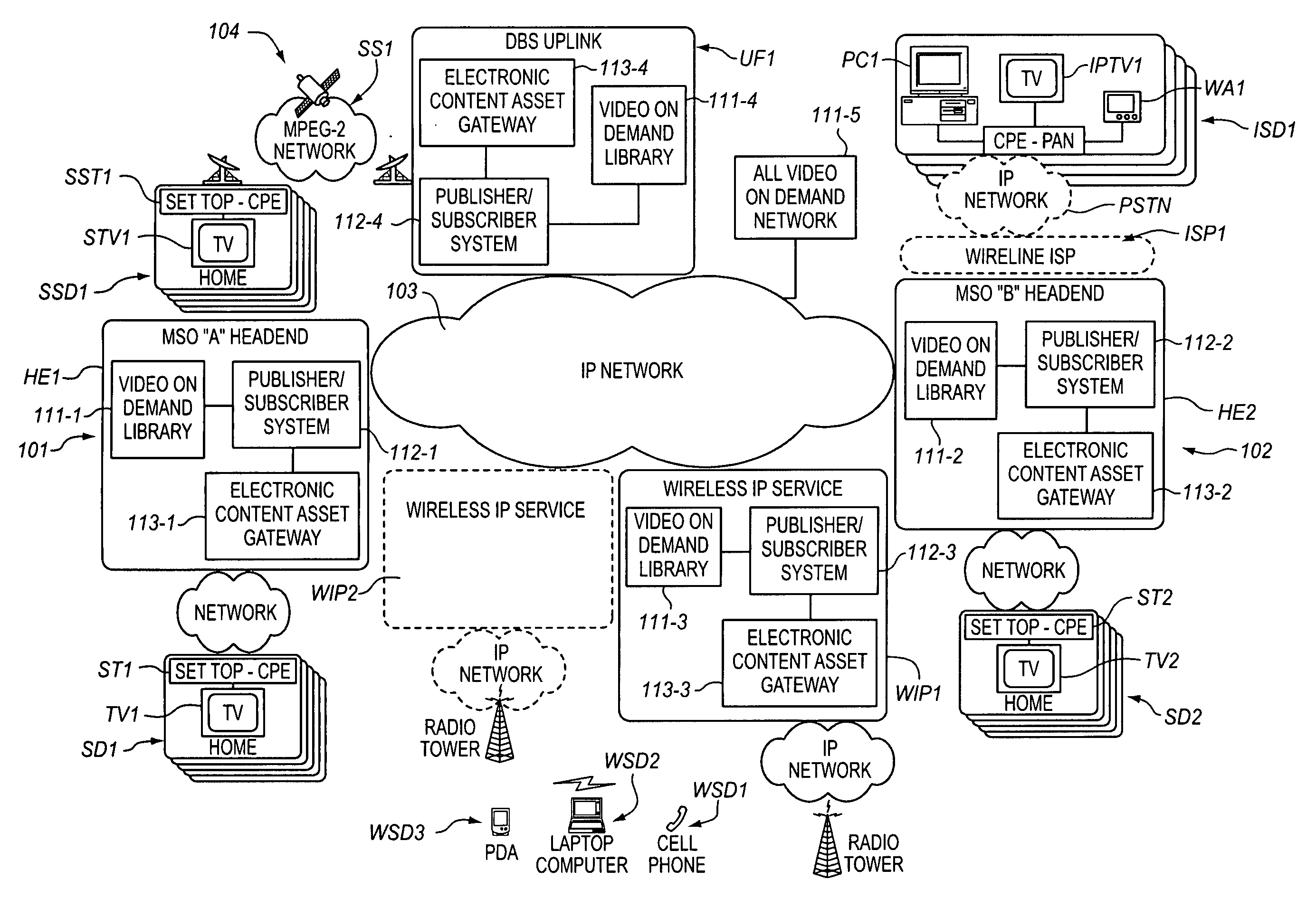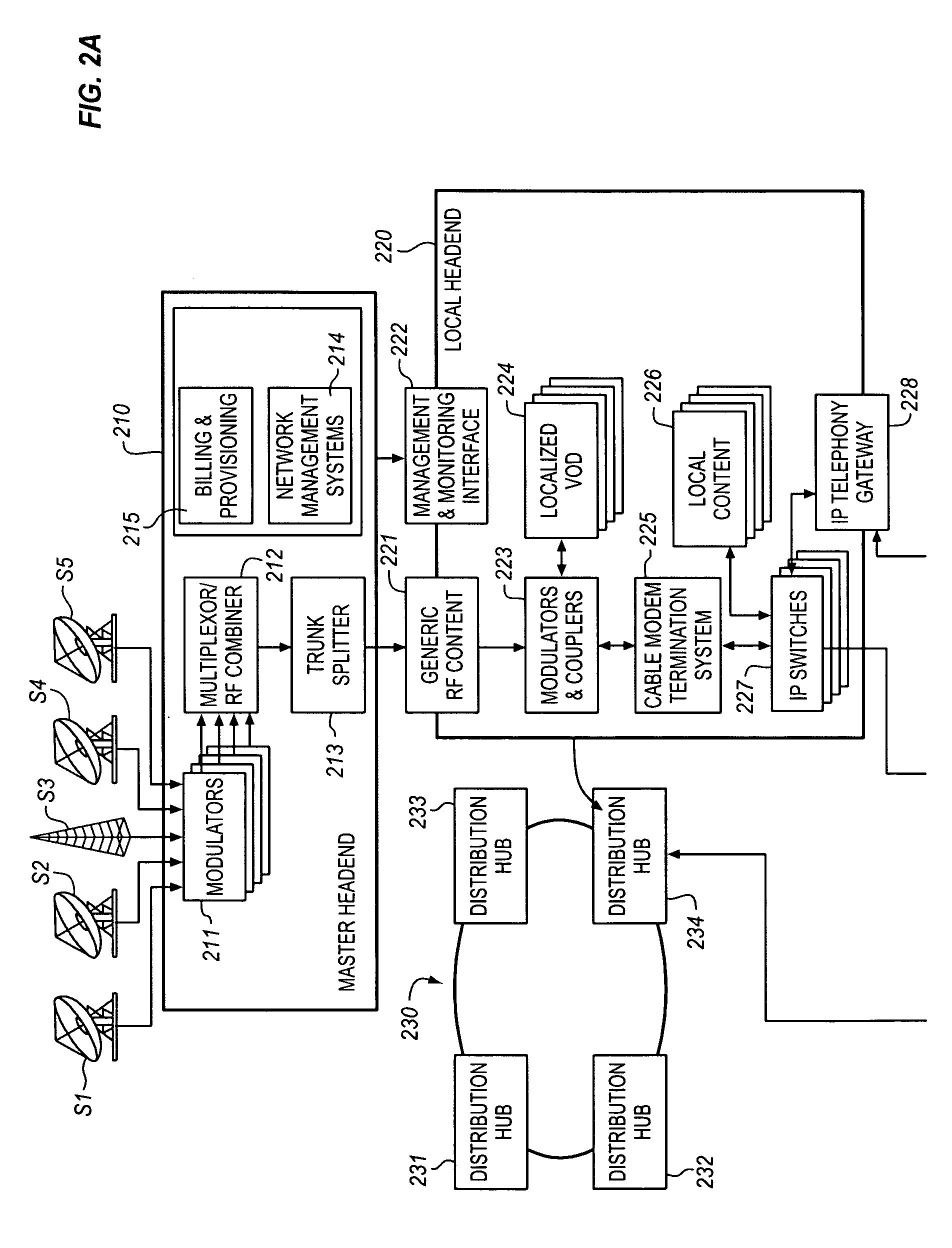System for distributing electronic content assets over communication media having differing characteristics
a technology of communication media and electronic content, applied in the field of multimedia communication networks, can solve the problems of content and temporal constraints on subscribers, symptomatic of an under-served population, and the potential number of such channels is limited by technology, economics and customer satisfaction
- Summary
- Abstract
- Description
- Claims
- Application Information
AI Technical Summary
Benefits of technology
Problems solved by technology
Method used
Image
Examples
Embodiment Construction
[0021]The present Electronic Content Asset Publication System acquires, stores, publishes, distributes, accesses and processes Electronic Content Assets, on demand and over a multi-media communications infrastructure. The Electronic Content Asset Publication System for example, enables subscribers to digitally record multi-media content and to access live and recorded multi-media content for viewing on a conventional television set or a suitable Web-Enabled Device (WED), e.g., a personal computer, a PDA or a cell phone.
[0022]The Electronic Content Asset Publication System also provides the capability for the subscriber to permit others to access their personal live and recorded multi-media Electronic Content Assets on a television set or a WED device. Subscribers may access multi-media Electronic Content Assets for viewing at the same physical location where the Electronic Content Assets originate, or for viewing from a remote location, perhaps one situated at a great distance from ...
PUM
 Login to View More
Login to View More Abstract
Description
Claims
Application Information
 Login to View More
Login to View More - R&D
- Intellectual Property
- Life Sciences
- Materials
- Tech Scout
- Unparalleled Data Quality
- Higher Quality Content
- 60% Fewer Hallucinations
Browse by: Latest US Patents, China's latest patents, Technical Efficacy Thesaurus, Application Domain, Technology Topic, Popular Technical Reports.
© 2025 PatSnap. All rights reserved.Legal|Privacy policy|Modern Slavery Act Transparency Statement|Sitemap|About US| Contact US: help@patsnap.com



